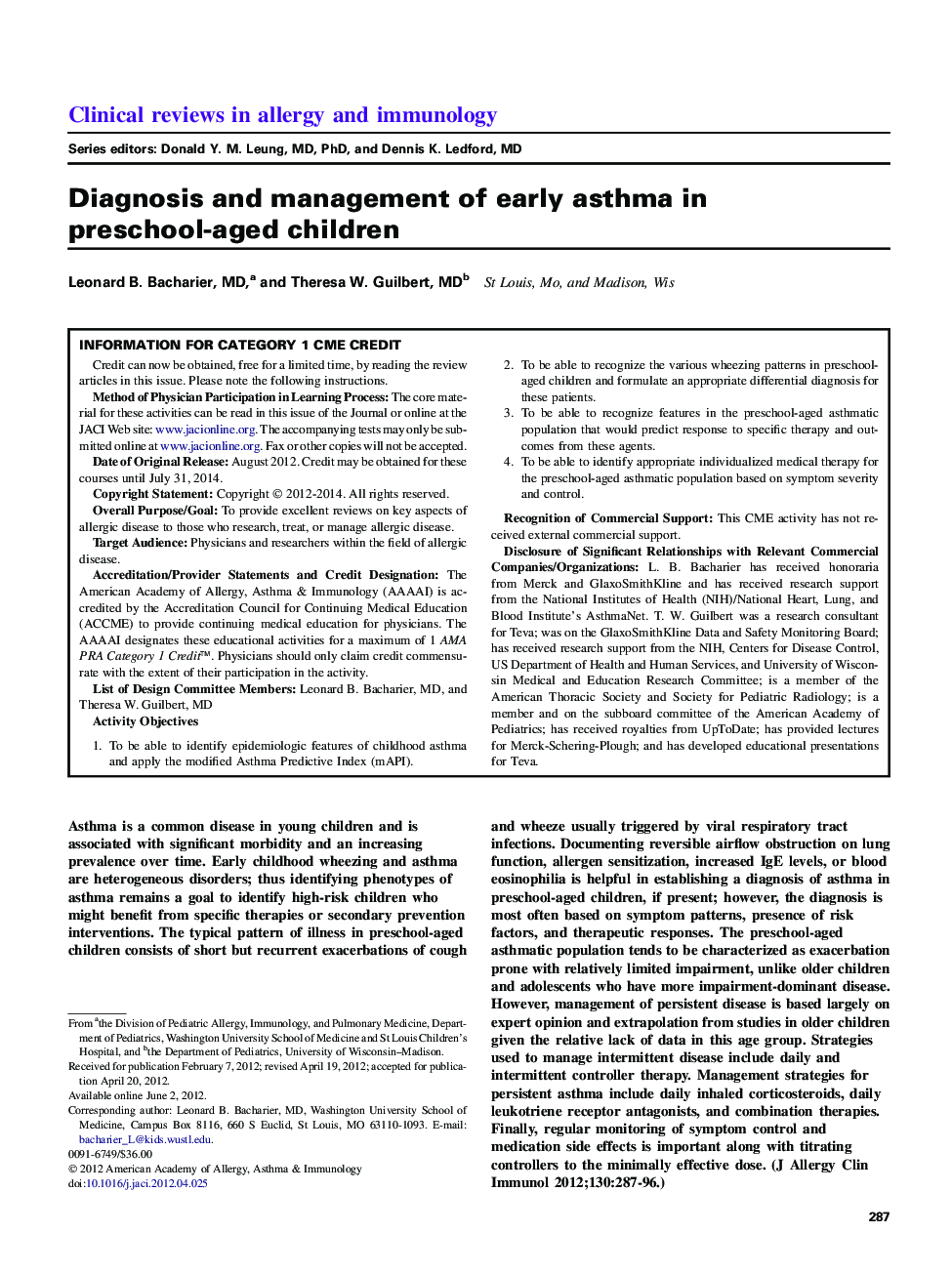| Article ID | Journal | Published Year | Pages | File Type |
|---|---|---|---|---|
| 3198404 | Journal of Allergy and Clinical Immunology | 2012 | 10 Pages |
Asthma is a common disease in young children and is associated with significant morbidity and an increasing prevalence over time. Early childhood wheezing and asthma are heterogeneous disorders; thus identifying phenotypes of asthma remains a goal to identify high-risk children who might benefit from specific therapies or secondary prevention interventions. The typical pattern of illness in preschool-aged children consists of short but recurrent exacerbations of cough and wheeze usually triggered by viral respiratory tract infections. Documenting reversible airflow obstruction on lung function, allergen sensitization, increased IgE levels, or blood eosinophilia is helpful in establishing a diagnosis of asthma in preschool-aged children, if present; however, the diagnosis is most often based on symptom patterns, presence of risk factors, and therapeutic responses. The preschool-aged asthmatic population tends to be characterized as exacerbation prone with relatively limited impairment, unlike older children and adolescents who have more impairment-dominant disease. However, management of persistent disease is based largely on expert opinion and extrapolation from studies in older children given the relative lack of data in this age group. Strategies used to manage intermittent disease include daily and intermittent controller therapy. Management strategies for persistent asthma include daily inhaled corticosteroids, daily leukotriene receptor antagonists, and combination therapies. Finally, regular monitoring of symptom control and medication side effects is important along with titrating controllers to the minimally effective dose.
